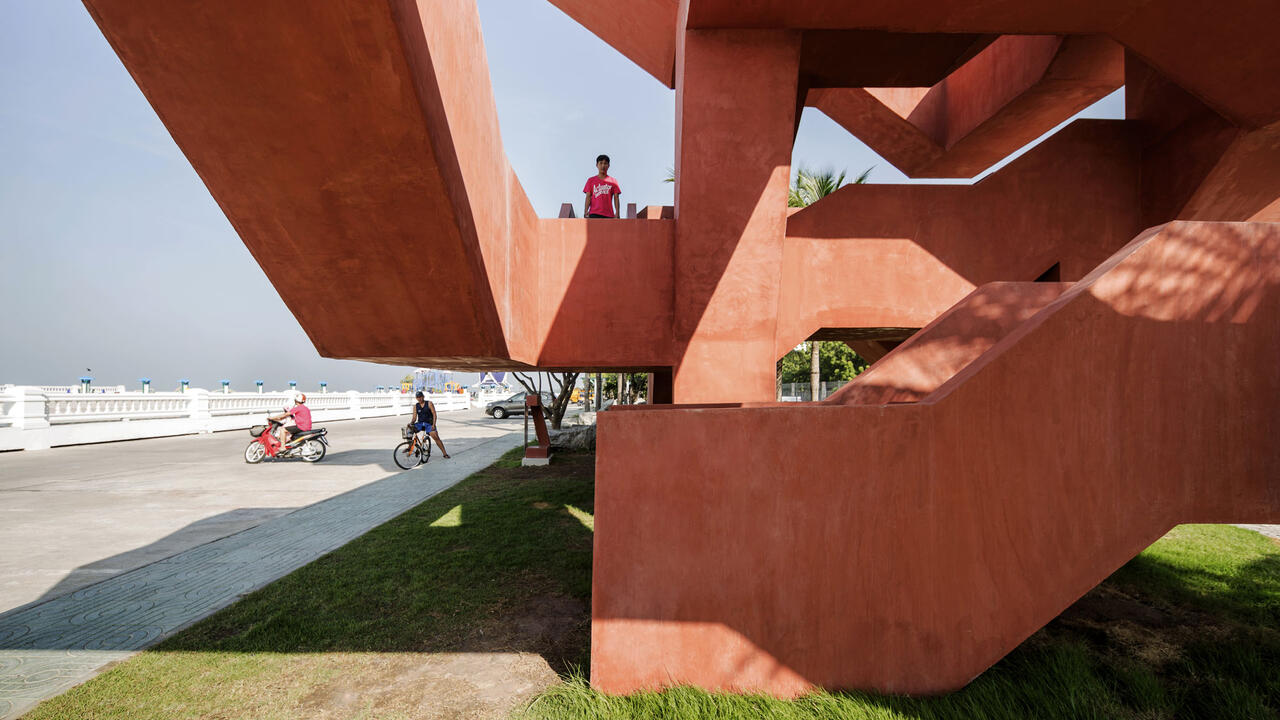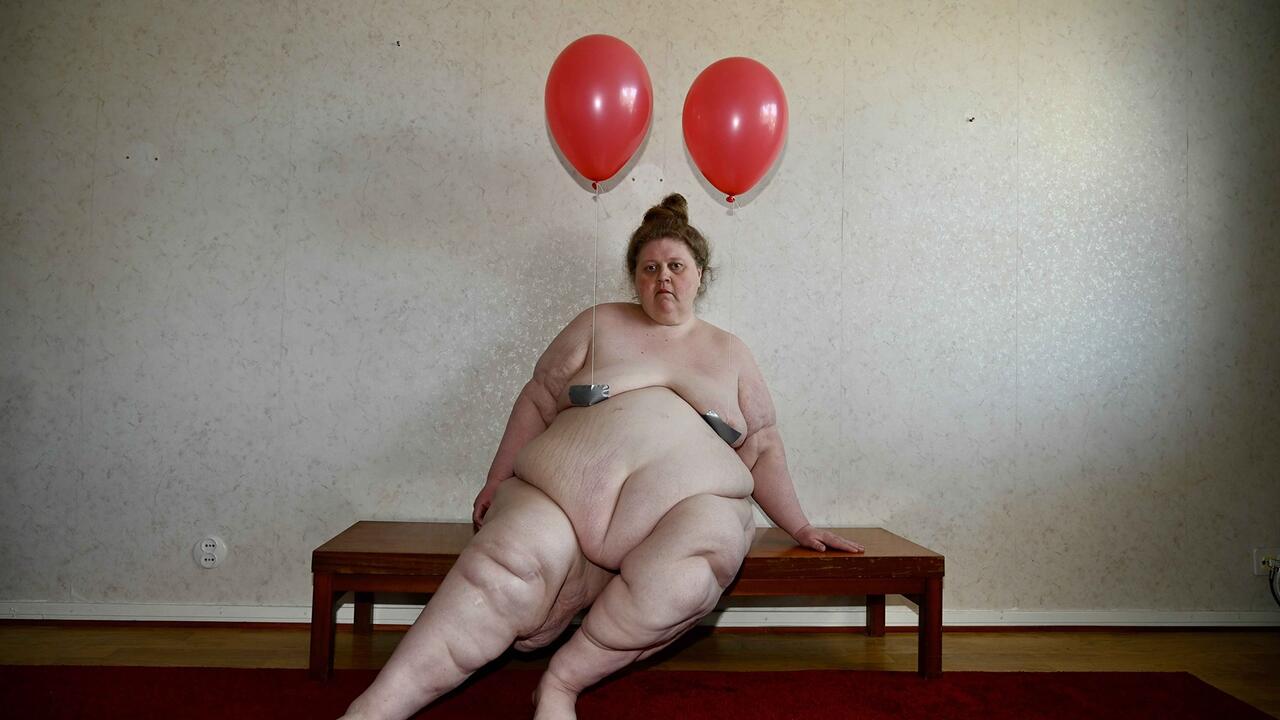Georg Herold
What makes Georg Herold’s work stand out, according to Matthias Winzen in the catalogue for the artist's first major retrospective, is the ‘fundamental irreconcilability of what is seen and what is said’. And indeed, faced with this exhibition, it was enormously difficult to put what you had seen into words: when trying to explain your enthusiasm for a plain roofing slat, of all things; or reading how respectfully, almost lovingly, Herold talks about the ‘rough, stupid material’ used in his works; and especially when considering the bizarre discrepancy between his works, his materials and his titles. Goethe is a roofing slat leaning against the wall (Goethe-Latte, Goethe Slat, 1982); the mountain peak of the Kleiner Bernhardiner (Small Saint Bernard, 1985) is a worn-out pair of underpants; and the canvas entitled Rumsfeld (2004) looks like it might collapse under its heavy burden of red bricks. Although Herold’s retrospective began chronologically with Goethe and ended with Rumsfeld, it would be wrong to attribute any great symbolic importance to this, especially since the artist has always resisted a definitive interpretation of his works. There is much that is irreconcilable in Herold’s oeuvre. It is unruly and witty, regardless of whether one is talking about it or just looking.
Herold studied under Sigmar Polke and Franz Erhard Walther in the late 1970s. In the early 1980s he found kindred spirits in Werner Büttner, Albert Oehlen and Martin Kippenberger. The ‘revolutionary tone’ adopted by Büttner, Oehlen and Herold in the artists’ book Facharbeiterficken (Fucking Skilled Workers, 1982) was a form of grassroots activity that rebelled against all forms of bourgeois art connoisseurship. Their works were intended primarily as an imposition – crude, but logically consistent. Apparently the one who took this attitude most to heart was Herold himself, who jumped at the idea of using simple building materials. In 1977 he celebrated the ‘presentation of the first slat’ at the Academy of Fine Arts in Hamburg –
a metre length of the wood used to make canvas stretchers, hung horizontally on the wall. A year later he made a mobile ‘laser’ out of bricks and nylon thread.
And then, along came Goethe: a roof slat of impressive proportions, bearing the name of the great writer and thinker, and alongside it another slat, no more than knee-high to the first, bearing the words ‘compared with some arsehole or other’. In the following years Herold doffed his disrespectful hat to Albrecht Dürer, whose Hare (1502) he cobbled together out of roofing slats (Dürerhase, Dürer Hare, 1984), and meted out similar treatment to Josef Stalin in the form of the Stalin Organ (1984). In Herold’s Steinhenge from 1985 – an inadequate translation of ‘Stonehenge’ – heavy bricks protrude from an unprimed canvas, while by the end of the 1980s only isolated scraps of canvas are left hanging over galvanized stretchers. Here Herold exalts the mortal remains of conventional artistic expression as a down-to-earth measure of all things. And yet it would be unfair to see his provocative gestures merely in the tradition of Arte Povera or ready-mades, doing no more than presenting comparatively poor and pathetic material as what it essentially is: a waste product of art and a waste product of reality. His works are too polished for that, his titles too clever.
In the late 1980s and early ’90s, for example, Herold numbered each of the countless fish eggs that made up portraits of Barry White, Donald Trump, Yasser Arafat and Charles de Gaulle in his ‘caviar pictures’. The artist is no less manic in his passion for collecting, processing his finds into small works and multiples or systematically ordering them in plain vitrines. Glass vessels, for example, contain the liquid placebo of an ‘artistic medicine’ (1995), with labels wonderfully obscuring the fact that the liquid in question is just water. In another vitrine from the same year, entitled Idiolatrine Modules (Complementary Supplements), Herold keeps differently perfumed socks in airtight storage jars. And the vitrine entitled Herrenperspektive (Gentlemen’s Point of View, 2002) offers the opportunity to kneel before a mobile comprising roof slats of various lengths.
For Herold this is where it all started: art, language, seriousness and humour. ‘How does one process confrontations with the unknown and the unbelievable?’ he asked at the beginning of the 1990s, before answering his own question: ‘One laughs, say, out of embarrassment or out of enthusiasm.’ At this retrospective, one was constantly laughing – and it was a laughter of pure enthusiasm.














